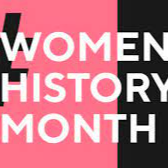Why Is Women’s History Month Celebrated in March?
12.9K
12

About
About Women History
Description
Why Is Women’s History Month Celebrated in March? A typical belief holds that Women's History Month's spot in March references a strike held by New York City's female piece of clothing laborers on March 8, 1857 (or, contingent upon which adaptation of the story you're hearing, in March 1908). Purportedly, a gathering of ladies from different plants combined to request better working conditions and the option to cast a ballot, regardless of badgering by police; the gathering in the end shaped their own association. It's a rousing story—or would be, in case it were valid. There's no proof that this strike, or the association of ladies article of clothing laborers it roused, at any point existed. The legend was exposed in the last part of the 1970s, when antiquarian Françoise Picq brought up that no contemporary papers covered the strike when it purportedly happened in 1857 and that the strike had never been referred to by the communist chiefs who established International Women's Day, from which Women's History Month advanced. Here is reality: International Women's Day was first considered at the Second International Socialist Women's Conference in 1910. Its chiefs, remarkably German extremist Clara Zetkin, needed to prepare working ladies in a separating from the standard women's activist development, which they felt ignored working ladies for the middle class. There was not yet a proper date for the recognition, however. In 1921 Zetkin proposed the March 8 date out of appreciation for a laborers' strike in Petrograd on that day in 1917, which denoted the start of the Russian Revolution. The idea of a day to praise ladies laborers got on in Europe, however in the United States the occasion's communist and socialist starting points felt like a reason for concern. The legend of a U.S.- based strike as the day's starting aided American women's activists acknowledge the occasion, particularly considering Cold War strains—however the fantasy apparently began in a 1957 issue of the French every day paper L'Humanité, whose editors needed to isolate the occasion from French communist and socialist gatherings, and not in the United States. By the 1970s American women's activist gatherings broadened the now-standard International Women's Day to Women's History Week, a work to intensify ladies' set of experiences in schools. In 1975 the United Nations moved to officially support a yearly festival of International Women's Day. The power behind the development made itself overwhelming, and, as an ever increasing number of gatherings started commending the entire week—just as campaigning for it to be broadly perceived—President Jimmy Carter assigned the main National Women's History Week, the week including March 8, in 1980. Ladies' set of experiences perceptions gathered momentum from that point. By 1986, 14 states perceived March as Women's History Month, and the following year the U.S. Congress set up Women's History Month as a yearly governmentally perceived recognition. Each sitting U.S. president since 1995 has given a yearly declaration regarding the job of American ladies ever.About
About Women History
